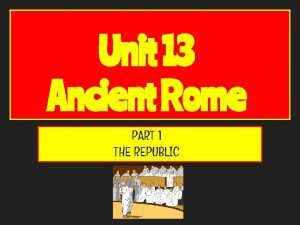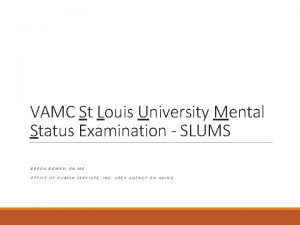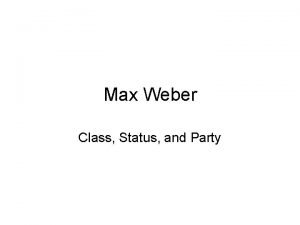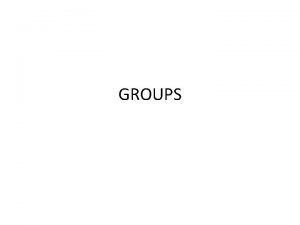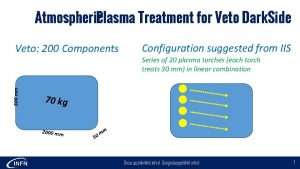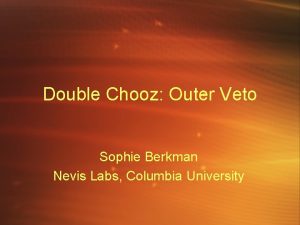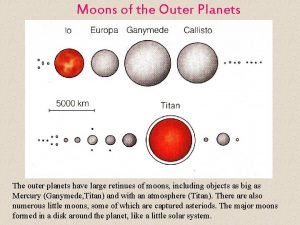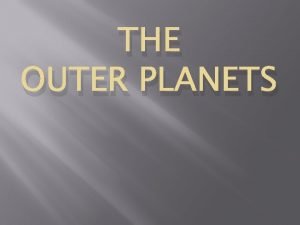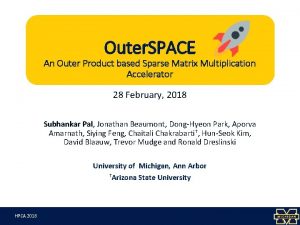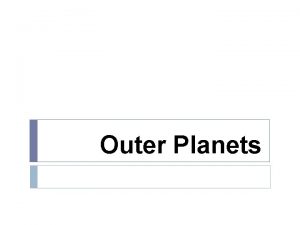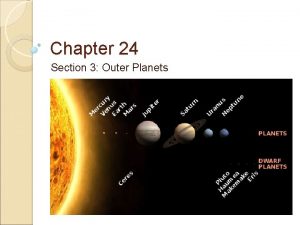Outer Veto Status Outer Veto Group University of

















- Slides: 17

Outer Veto Status Outer Veto Group: University of Chicago: Adam Anderson, Ed Blucher, Mark Dierckxsens, Matt Worcester, Elizabeth Pod, Dan Silverstein, Nathan Whitehorn, Matt Zimmerman Columbia University: Janet Conrad, Zelimir Djurcic, Mike Shaevitz, Matt Toups Barnard College: Reshmi Mukherjee + Columbia and Chicago Electronics Groups 1 June 2007 Double Chooz Meeting E. Blucher

News • NSF has agreed to fund project: 3 -year grant for $2. 3 M • 10% of requested total will be awarded now. Years 2 and 3 contingent on available funds • Suggested budget profile should not present any problems. • Review at NSF in August Primary responsibilities: • Module construction, testing: Chicago • Electronics: Columbia • PMT testing: Barnard/Columbia

Outer veto design based on 5 cm 1 cm strips of coextruded plastic scintillator + Ti. O 2 reflector with 1. 2 mm diameter wavelength shifting fiber (similar to MINOS, OPERA). Ti. O 2 Modules will be constructed of 64 6. 4 m long strips in two layers: 32 5 cm = 1. 6 m Fibers will be readout at both ends with Hamamatsu M 64.

4 of these double layer modules will be combined to form a 6. 4 m plane. Finally, a second plane will be added with 90 degree orientation.

Near Detector Outer Veto • Four 6. 4 m square 4 -layer planes • One additional 6. 4 m square 4 -layer plane to allow limited tracking

Far Detector Outer Veto • Two 6. 4 m square 4 -layer planes • One additional smaller 4 -layer plane to allow limited tracking

Far Hall Design Critical Issue: We need to know available space in all directions for two large counters and for smaller counter above glove box.

Mechanical Issues Strip design: We have ordered materials to evaluate different combinations of fiber diameter and scintillator coupling schemes. Our default (most conservative) plan is to use 1. 2 mm diameter fibers glued into grooves, with double-ended readout with M 64 s. We will make light yield measurements with 1. 2, 1. 5, and 1. 8 mm fibers with and without glue. The best outcome would be a fiber diameter that gives sufficient light for single-ended readout without glue. Tests for light yield measurements underway at Chicago and FNAL (Columbia)

~ 4 m sample extrusions from MINOS (with groove) and from MINERVA (with hole) We will measure light output versus position for 1. 2, 1. 5 and 1. 8 mm diameter fibers with groove (with and without glue) and with hole

In parallel, we are working on module design and overall detector design. Wherever possible, we’re trying to take advantage of earlier design work from MINOS and OPERA. Strip, module, and overall design issues are all coupled Example: Default plan starts with 32 strip wide submodules wrapped in a 0. 016” Al skin. For our nominal strip width of 5 cm, this leads to 63” wide modules – but standard rolled Al is only available up to 60”. We could use narrower strips, but this increases channel count … and for far hall, we might prefer to use wider strips to fill available width of hall.

Far Detector Outer Veto Design Modified design to improve coverage of cable tubes

Staggered Design for Module Assembly • Eliminates dead space between modules • Removes space restriction on edges of modules • Adds flexibility in overall detector size

Far Detector Outer Veto Size Proposal Summary: As large as possible

Far Detector Outer Veto Size Proposal Summary: As large as possible Dimension transverse to hall: ~7. 4 m (maximum coverage) Either four 64 -strip modules with 5. 9 cm strips or five 64 -strip modules with 4. 8 cm strips or five modules with 5 cm strips with more overlap Dimension along hall: as long as compatible with other parts of installation. (Nominal design extends ~7 m from neck for 6. 4 m of scintillator length. ) We will optimize strip width and number of modules when both dimensions are fixed.

Readout electronics will be based on MAROC 2 ASIC (LAL) • Serial readout using USB of buffered data; USB concentrators at each plane corner to optical link to readout PC • Outer veto events will be correlated with inner detector events based on time stamps. As discussed in Madrid, all detectors will include count of 62. 5 MHz clock cycles in readout; we propose 32 bit counter with reset signals sent by DAQ computer each minute.

Goals for next months • Finalize sizes for far detector modules • Optimize combination of fiber diameter, fiber-to-scintillator coupling, and readout • Complete module design including fiber routing and fiber-to-M 64 coupling • Build 64 -strip module with our own extrusions to test at Chooz far site • Establish viability of MAROC 2 ASIC for readout

Possible construction layout for U. of Chicago high bay.
 Election of 1836 & rise of mass democracy
Election of 1836 & rise of mass democracy Elected only by plebeians, veto power, 1 year term
Elected only by plebeians, veto power, 1 year term Veto a law
Veto a law Slums vamc
Slums vamc Status vs class
Status vs class 沈榮麟
沈榮麟 Umd capital region health
Umd capital region health Group polarization.
Group polarization. Y = a(b)^x
Y = a(b)^x Anova within group and between group
Anova within group and between group Definition of social group
Definition of social group Group 2 specialties
Group 2 specialties Thermal stability of group 2 nitrates down the group
Thermal stability of group 2 nitrates down the group Amino group and carboxyl group
Amino group and carboxyl group Amino group and carboxyl group
Amino group and carboxyl group In group out group
In group out group Group yourself or group yourselves
Group yourself or group yourselves William graham sumner in group out group
William graham sumner in group out group

